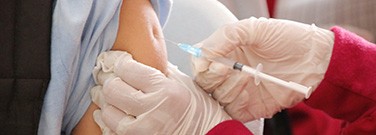Alternative Ways to Deliver Medicine

By Kylie Wolfe
Would you rather take a pill or get a shot? New technologies could make needles less necessary in the world of medicine, helping some patients keep up with treatments they’d otherwise fear or dread.
Scientists at the Massachusetts Institute of Technology (MIT) designed a robotic pill to administer drugs without the use of a traditional needle and syringe. This pain-free alternative injects medicine internally, through the stomach wall, instead of through the skin. The team published its work in 2019 in Science and released updates in the March 2022 issue of Matter.
How It Works
MIT’s robot is the size of a pea. Even though it’s small, the weight of the device lets it sink to the bottom of the stomach once swallowed. The pill isn’t a perfect sphere, but instead has a steeply domed shell like a leopard tortoise. This helps it roll right-side up, just like the reptile it’s modeled after.
“No matter how I drop it, it always lands the same way,” Robert Langer, a chemical engineer at MIT and member of the research team, told ScienceNews Explores.
The pill is spring-loaded with a microneedle. The needle is held in place by sugar glass that gradually dissolves in the stomach. By adjusting the thickness of the sugar, scientists can change how long it takes to dissolve. This helps ensure that the needle is released, and the medicine administered, at the right time.
Real-Life Applications
Researchers from MIT have successfully used this robotic pill to give insulin to mini pigs. Typically, insulin cannot be taken orally because it breaks down in the stomach before reaching the bloodstream. This new approach keeps the treatment contained until it’s injected into the stomach wall.
This teeny tiny pill has also delivered mRNA-based medicines, showing promise for future applications, like Pfizer’s COVID-19 vaccine.
Patches Over Pills
A team in France designed an alternative to shots, too — medicine patches that are used inside the mouth. Placing these patches inside a person’s cheek helps medicines enter the bloodstream quickly.
They also tested this technology as a vehicle for insulin — and the patches did just what they set out to, lowering the blood sugar of both mini pigs and cows. This information was reported in ACS Applied Bio Materials in February 2022.
Challenges and Limitations
Though pills and patches are more patient-friendly, they come with their own set of challenges. Some speculate that the robotic pill may be too expensive for regular use and that the patch may not be able to deliver enough insulin.
Regardless, scientists say both technologies will expand treatment access to hesitant, needle-fearing patients. And that’s a relief for many.
Discussion Questions
- Why is this research important in the world of medicine?
- What other medical conditions, like diabetes, would benefit from having patches and pills as treatment alternatives?